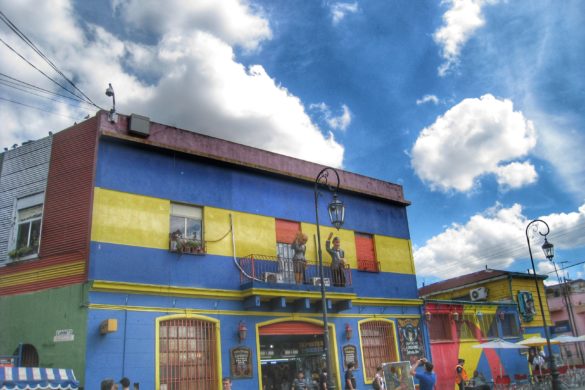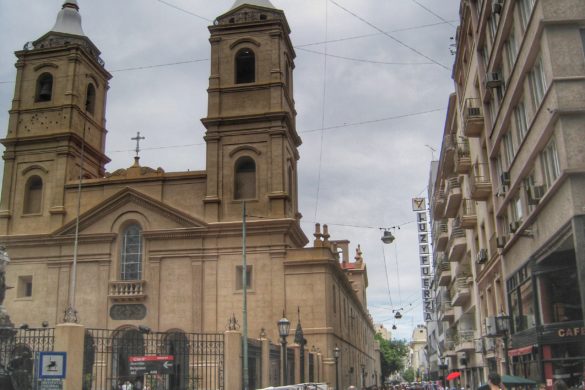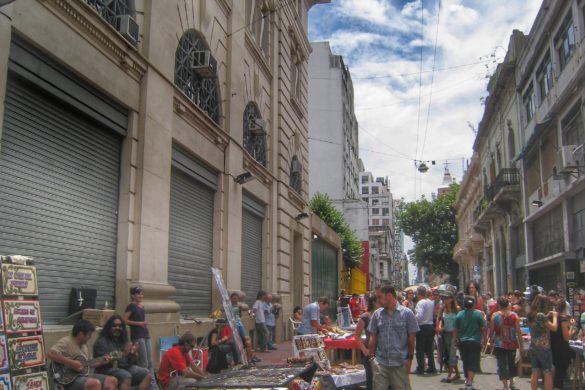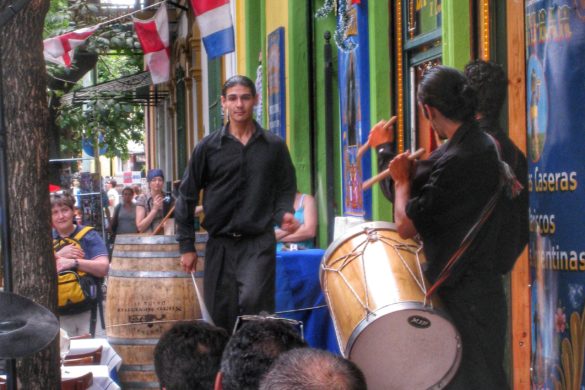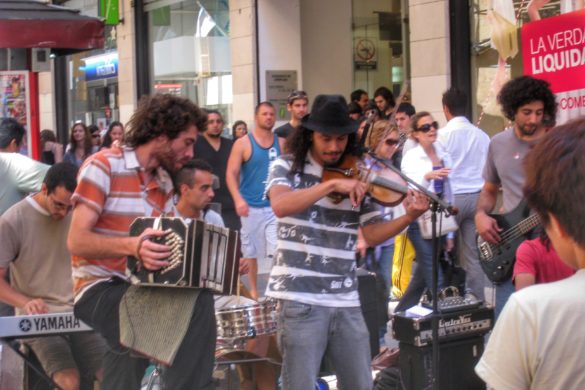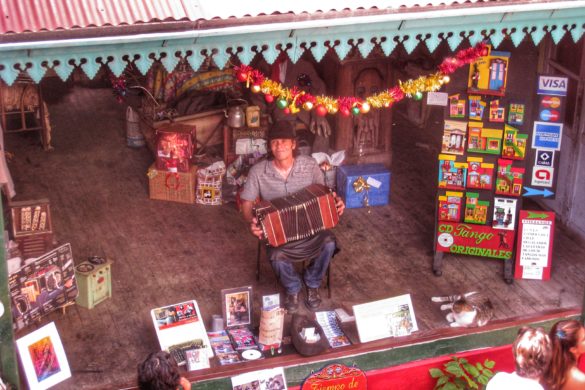The city has a large expat community and a distinct European feel to it. Smiles are everywhere and the quality of life is very high! We explored the city for two days before heading out on our southbound journey to Patagonia.
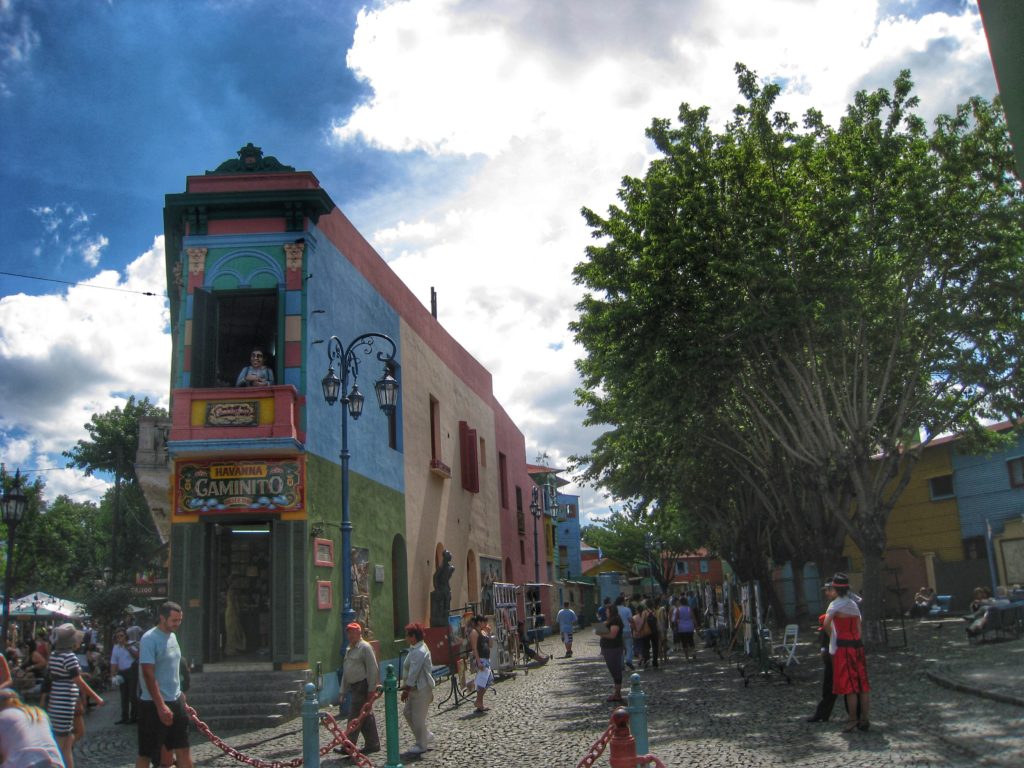 La Boca
La Boca
One of my favorite places was an area called “La Boca”, located near the city’s port in the southeast. The neighborhood is filled with multi-colored houses and tango dancers on every street corner. Small markets, a large pedestrian area, and numerous local shops give off a traditional European feel.
People had such an incredible passion for music and art everywhere we went. The best live tango dancers perform on a famous street called “Caminito Tango”.
The Caminito (“little path” in Spanish) is a street museum comprising colorful painted houses typical of the immigrant dwellings that came to characterize the port area towards the end of the 19th century. Today, there are several works by Argentine artists incorporated as part of the street museum. The street has become a favorite culture hub with several restaurants offering tango and folk dance shows daily.
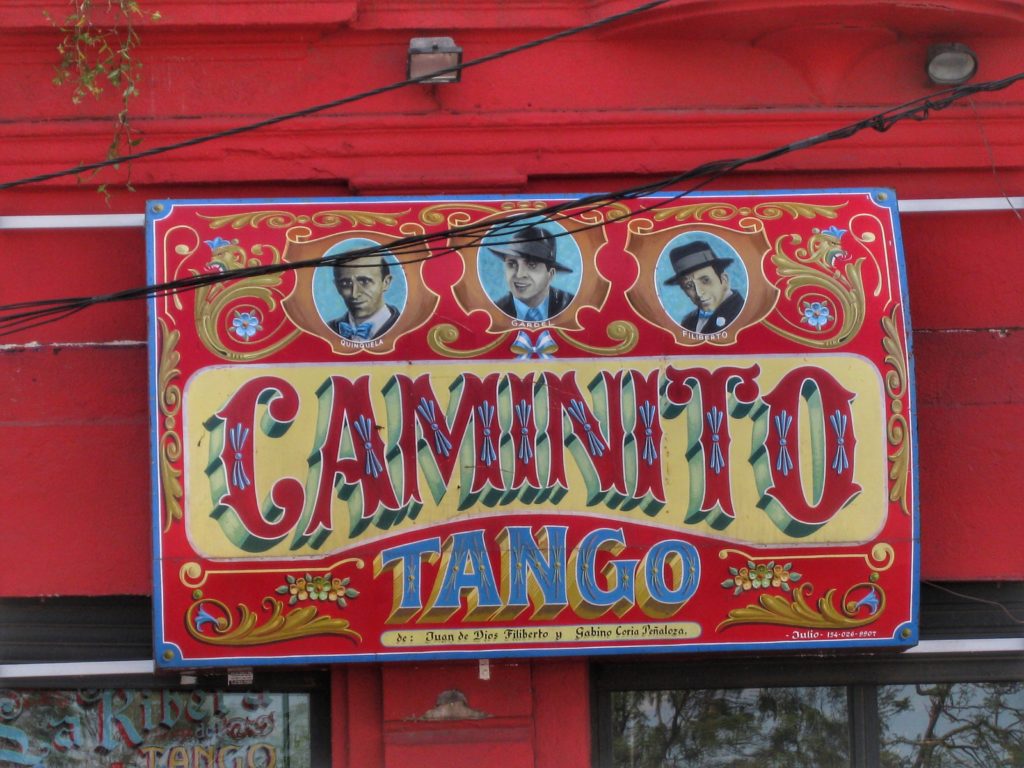
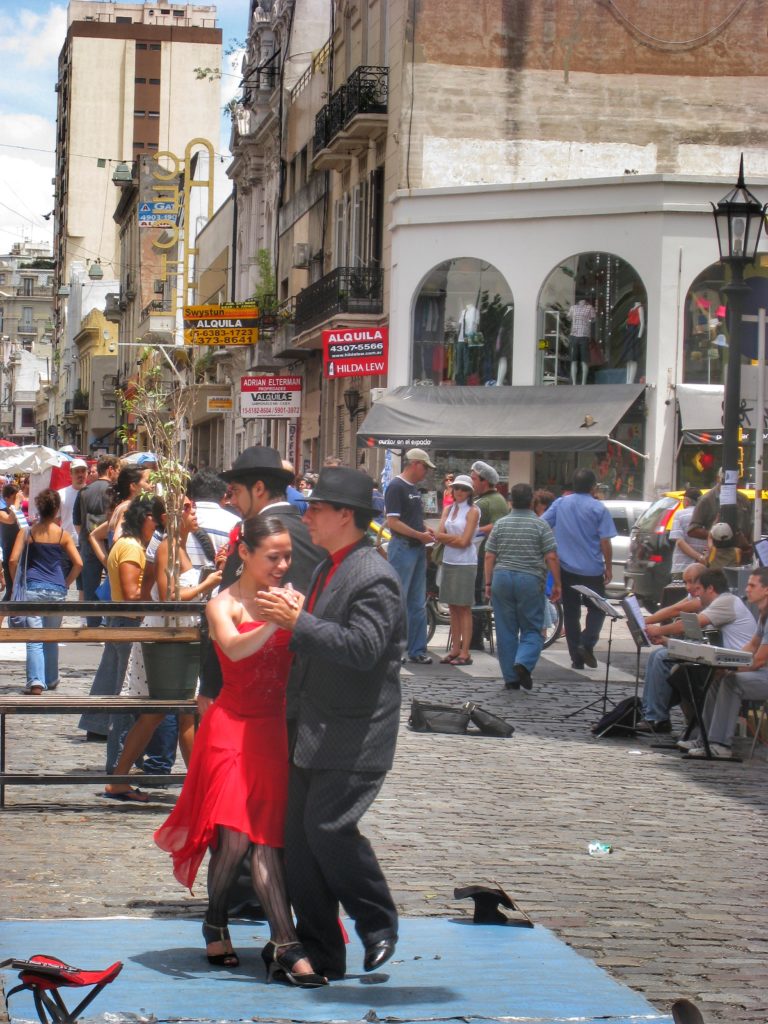 The Tango dancing was sleek and sexy, but Argentina was also known for another thing, its BBQ. After a few recommendations from locals, we found ourselves at a place called “La Estancia”. Talk about epic meal time.
The Tango dancing was sleek and sexy, but Argentina was also known for another thing, its BBQ. After a few recommendations from locals, we found ourselves at a place called “La Estancia”. Talk about epic meal time.
This place had a huge outdoor BBQ pit filled with entire racks of meat being slow-cooked all day. I equipped myself with a fork in each hand and dug in!
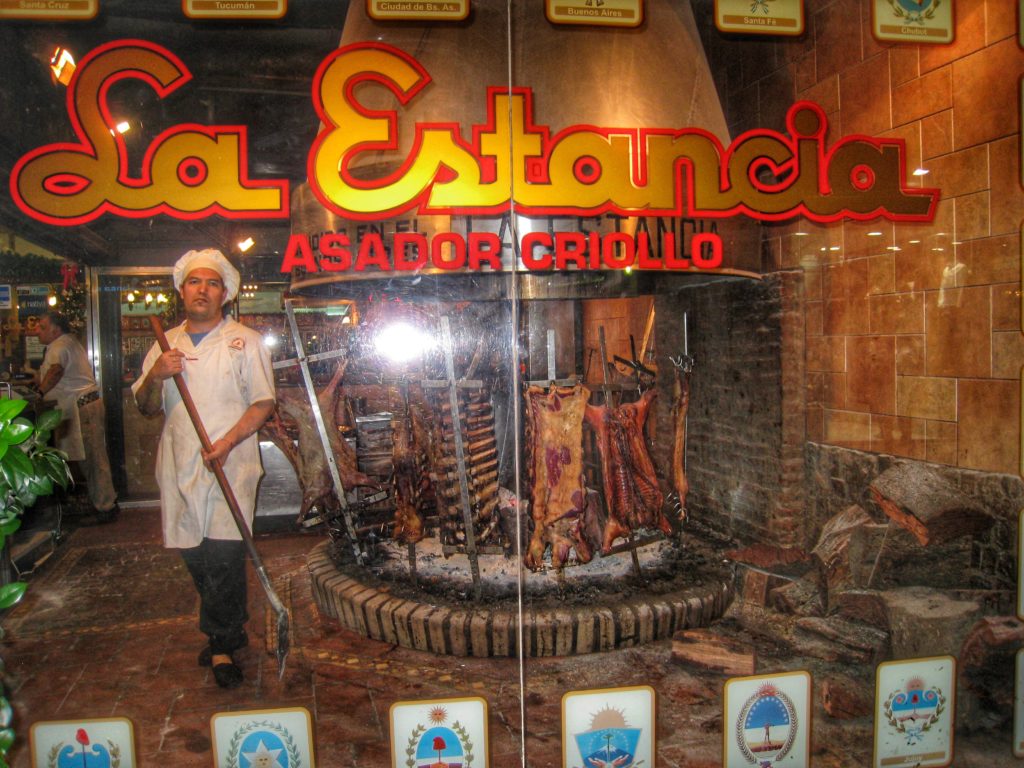
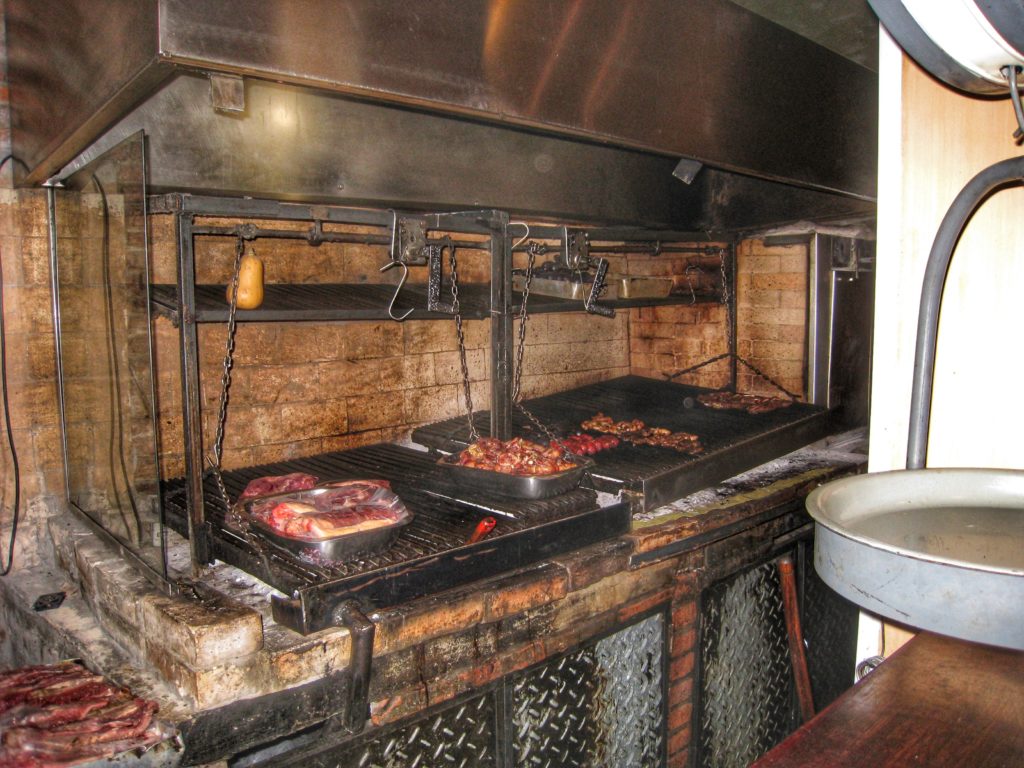 The following morning, I headed to “Monserrat”, a bohemian neighborhood that is hundreds of years old. Vibrant architecture and towering monuments lined the streets. The main square is called the “Plaza del Mayo,” where the famous Argentinian revolution took place during Spain’s Peninsular War (1810).
The following morning, I headed to “Monserrat”, a bohemian neighborhood that is hundreds of years old. Vibrant architecture and towering monuments lined the streets. The main square is called the “Plaza del Mayo,” where the famous Argentinian revolution took place during Spain’s Peninsular War (1810).
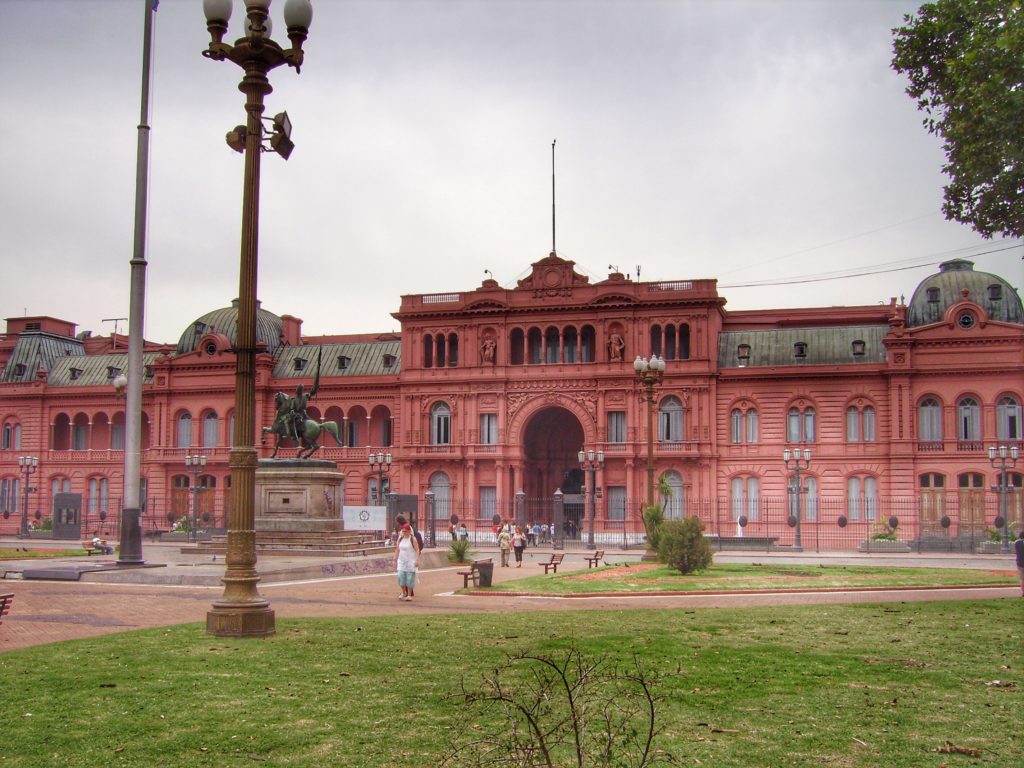
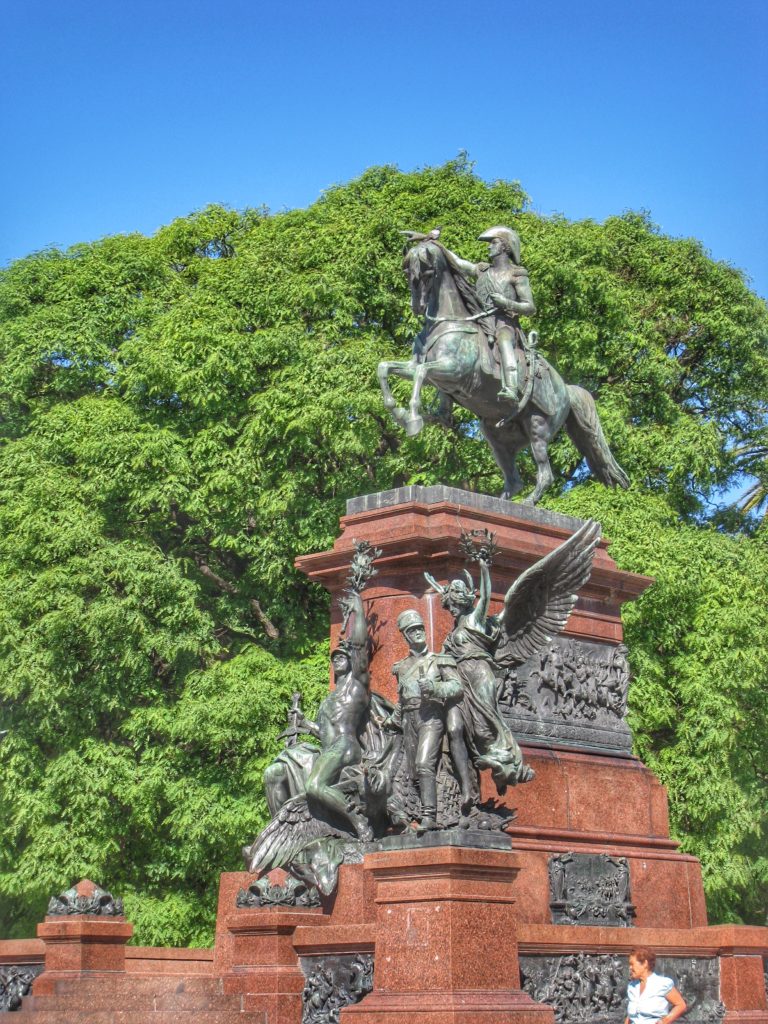 Before we departed the city for our trek down south, we made one last stop at the famous “La Recoleta Cemetery”. The site contained 4691 vaults – all above ground – of which 94 had been declared National Historical Monuments by the Argentine government.
Before we departed the city for our trek down south, we made one last stop at the famous “La Recoleta Cemetery”. The site contained 4691 vaults – all above ground – of which 94 had been declared National Historical Monuments by the Argentine government.
The entrance to the prestigious cemetery was through a massive gate with massive stone columns. The cemetery contained many elaborate marble mausoleums still in use by rich families in Argentina that have their own vaults. Part of emperor Napoleon’s family and many famous Argentinian presidents were buried there. Decorated with statues, in a wide variety of architectural styles, most of the mausoleums were constructed with imported materials from Paris and Milan. Now those were some rich dead people!
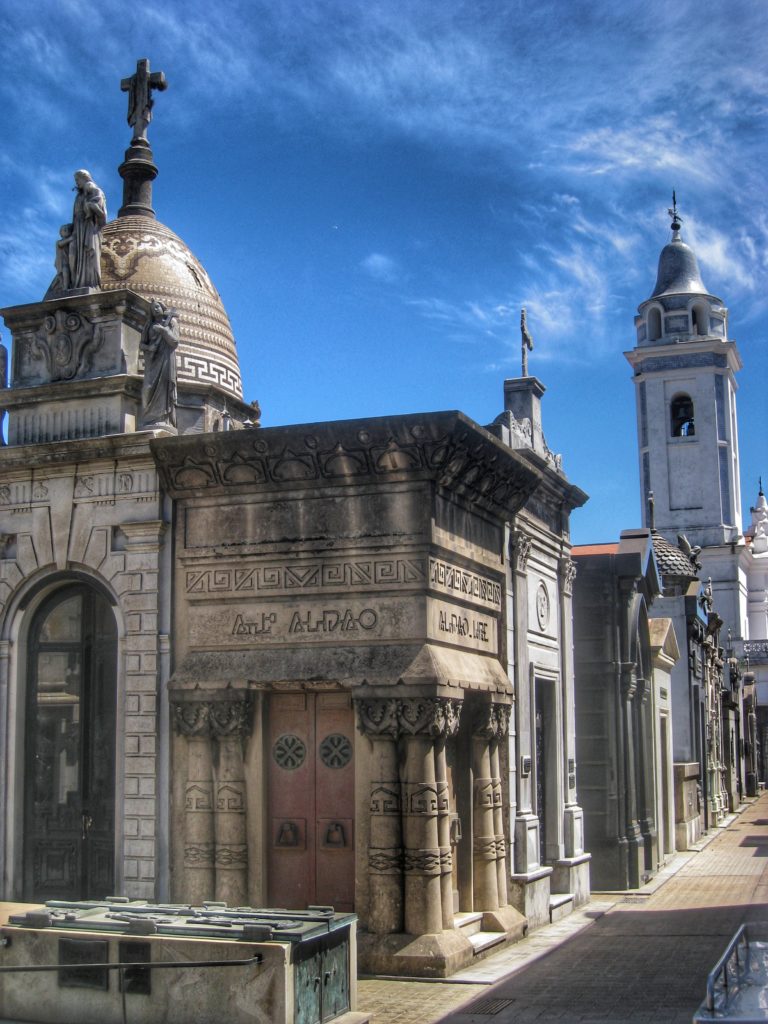
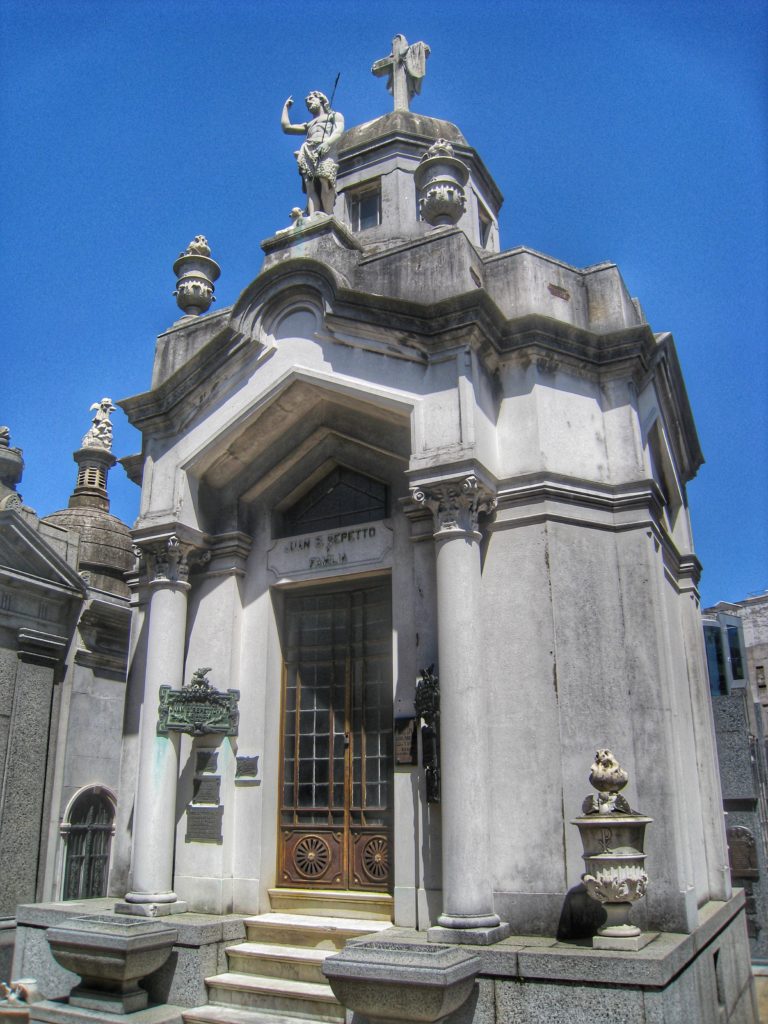 I hope you enjoyed this quick Buenos Aires cultural insight. On to the Patagonia adventure!
I hope you enjoyed this quick Buenos Aires cultural insight. On to the Patagonia adventure!
-“Every man can transform the world from one of monotony and drabness to one of excitement and adventure.” – Irving Wallace


